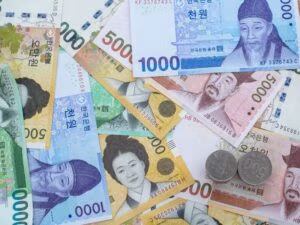Central banks across Asia are grappling with a dual-edged sword in 2025 as the U.S. dollar’s strength puts their economies under strain. Currencies like the Japanese yen, South Korean won, Chinese yuan, and Indian rupee have plummeted to multi-year lows against the greenback, posing complex challenges for policymakers.
While weaker currencies can make exports more competitive—a potential advantage as President-elect Donald Trump threatens tariffs—central banks must weigh the risks of imported inflation and speculative pressures, analysts say.
The Dollar’s Ascent
Since Trump’s victory in the 2024 U.S. presidential election, the dollar has appreciated by 5.39%, fueled by expectations of inflationary policies like tax cuts and tariffs. The U.S. Federal Reserve has adjusted its monetary stance, expressing caution about inflationary pressures and signaling a slowdown in interest rate cuts. This shift has widened the yield gap between U.S. and Asian bonds, driving capital flows toward the U.S. and pressuring Asian currencies.
Challenges Across Asia
China
The onshore yuan hit a 16-month low of 7.3361 per dollar, undercutting the People’s Bank of China’s (PBOC) room to maneuver. While a weaker yuan could boost exports, it risks spurring capital outflows. Analysts suggest the government focus on fiscal measures, like long-term bond issuance, to stimulate growth.
Japan
The yen remains at historic lows despite significant intervention by the Bank of Japan (BOJ), which spent over ¥15.32 trillion ($97.06 billion) in 2024 to stabilize the currency. While a weaker yen supports inflation—running above the BOJ’s 2% target for 32 consecutive months—the central bank must balance wage and price increases within acceptable limits.
South Korea
The South Korean won recently hit its weakest level since 2009, prompting the Bank of Korea to intervene, leading to a five-year low in foreign reserves. Despite these efforts, the central bank cut rates to stimulate domestic growth, underscoring the challenges of balancing economic priorities.
India
The Indian rupee plunged to a record low of 85.86 per dollar, fueled by foreign investor outflows and inflation concerns. While inflation has moderated, slowing GDP growth and the Reserve Bank of India’s (RBI) split decision to hold rates at 6.5% reflect growing pressure. However, India’s large foreign exchange reserves provide some stability.
Regional Implications
The U.S. dollar’s strength creates ripple effects across the region. In China, a sharply weaker yuan could undermine neighboring economies like South Korea and Taiwan, which compete directly in export markets. Meanwhile, interventions by Asian central banks drain foreign reserves, potentially limiting their ability to manage future crises.
James Ooi, a market strategist, warns that a strong dollar heightens imported inflation and strains reserves. “Lowering interest rates to stimulate growth can be counterproductive in such scenarios,” he noted.
As Asia’s central banks navigate these challenges, the balancing act between supporting growth and maintaining currency stability will be critical. Whether through targeted fiscal policies, strategic rate adjustments, or interventions in currency markets, the path forward remains fraught with uncertainties tied to the U.S. dollar’s trajectory.





